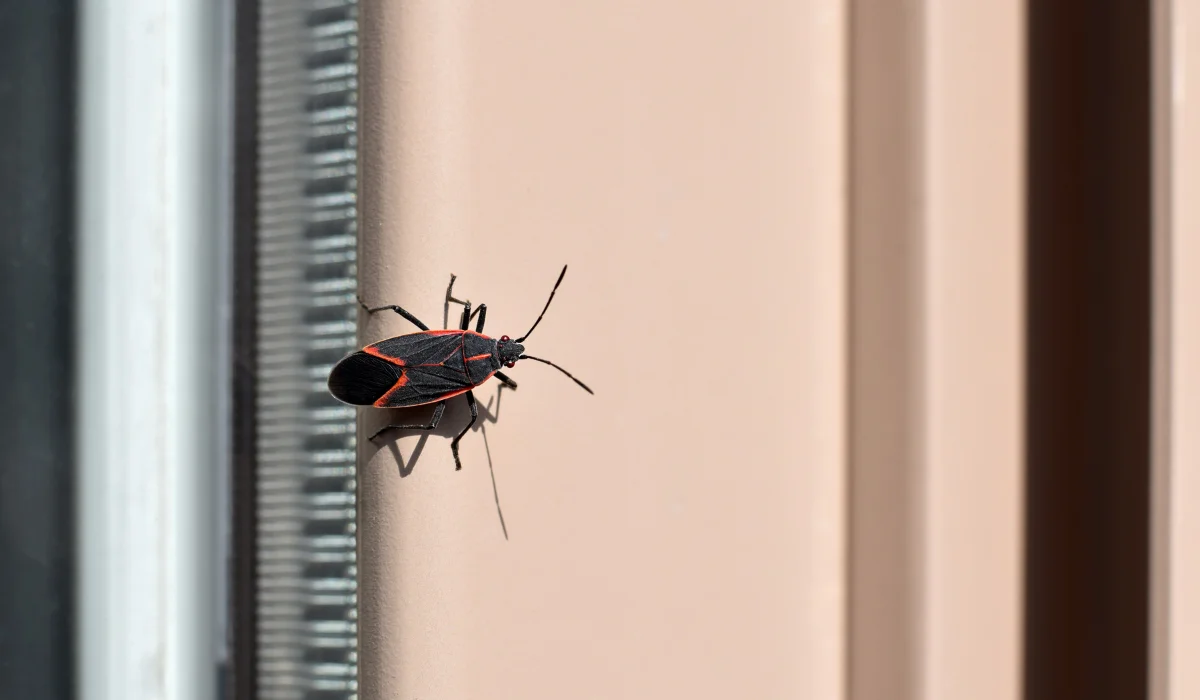Ever wondered what those tiny wood shavings in your Louisiana home could mean? Spotting a carpenter ant nest is crucial before these pests cause structural damage.
Finding a carpenter ant nest involves looking for smooth, sandpaper-like wood surfaces, often accompanied by frass—a sawdust-like material. Keep reading to learn everything you need to protect your home year-round from these unwelcome guests.
Key Takeaways
- Carpenter ants often nest behind walls, baseboards, and wooden structures, leaving frass behind and making faint sounds when tapped.
- Carpenter ants prefer moist or decaying wood like tree stumps, firewood piles, and shaded areas with poor drainage.
- A flashlight or bait can help trace ant trails and lead to indoor or outdoor nests. This helps find primary and satellite colonies.
- Pest control services can help get rid of carpenter ants and prevent future infestations when DIY methods are not enough.
HOW TO LOCATE CARPENTER ANT NESTS INDOORS
To locate carpenter ant nests within your home, consider these essential steps for a thorough inspection:
Search Wooden Structures and Probe for Soft Spots
Like termites, carpenter ants often nest in or behind wall voids, baseboards, and wooden structures such as furniture edges, window sills, or door frames. These ant species prefer these areas because they can excavate rotten wood unnoticed, leading to serious damage over time.
Look for signs such as small holes, cavities, piles of sawdust, or frass at the base of these wood structures. To test the wood, use a screwdriver to probe any suspicious areas. You can also gently tap the wall or baseboard and listen for movement sounds.
Soft, easily penetrated wood suggests a potential nest, especially if accompanied by a hollow sound.
Use a Flashlight to Track Ant Trails
Worker ants often travel along the same paths to and from food sources, whether human or pet food. A flashlight helps spot these trails, especially in dimly lit areas such as hallways or closets. Start your search at potential entry points like windows or doors and follow the trail back to the nest.
HOW TO FIND CARPENTER ANT NESTS IN YARDS
To locate carpenter ant nests in your yard, it’s essential to understand where these ants typically thrive. Homeowners like you can use the following strategies to guide your search:
Follow Ant Trails Outside
Following ant trails to and from food sources, such as honeydew from aphids, can effectively find nests outdoors. Look along edges where ants travel, such as fences, walls, or other structures connecting different parts of the yard. This can help locate primary and satellite colonies without needing to track trails inside the home.
Examine Tree Stumps and Dead Wood
Unlike fire ants that prefer the soil, carpenter ants are attracted to decaying or moist wood, making tree stumps and dead wood prime nesting spots. When searching these areas, look for sawdust-like material and large ants with segmented bodies.
Look for Tunnels in Firewood Piles
Firewood piles offer an ideal environment for carpenter ants due to their often moist, decomposing nature. Inspect these piles for tunnels with smooth, rounded edges, which differ from the rough splintering caused by regular decay.
Check Moist, Shady Areas
Carpenter ants seek moisture, making shady, damp yard areas prime nesting sites. Investigate places with poor drainage, such as near downspouts, leaky faucets, or dense landscaping. If ants are active in these locations, it’s a sign of favorable conditions for a nest.
TIPS FOR CONFIRMING CARPENTER ANT NESTS
To confirm carpenter ant nests, keep an eye out for other signs of carpenter ant infestation that may suggest hidden colonies.
Look for Other Signs of Carpenter Ant Activity
Look for discarded wings from swarmers near windowsills and entry points. Noting the type of ants present is crucial—carpenter ants have a distinct thorax that is evenly rounded when viewed from the side.
Also, you may spot larvae if you investigate crawl spaces, crevices, or damaged wood more closely. Carpenter ant workers are often seen moving debris and can be distinguished by their elbowed antennae.
Use Bait to Trace Ants Back to the Nest
Bait can lead to the source of a carpenter ant problem. Certain pheromone-based or sugar-based ant baits work in populated and humid areas. Observe their trails carrying portions of the bait back to the carpenter ant colony. When used consistently, it can pinpoint primary and satellite colonies.
Consult with Carpenter Ant Control Services
When clean-up and DIY methods fall short, consulting with pest control services might be necessary. Consulting early can help get rid of carpenter ants and ensure a pest-free environment, preventing further damage or future infestations.
Whether you’re in Baton Rouge or New Orleans, seeking expert help should be easy. For immediate intervention for a severe infestation, let Lajaunie’s carpenter ant exterminators tailor a solution that’s right for your home.
For more information about our services, visit our service page.
 By: LaJaunie's Pest Control
By: LaJaunie's Pest Control 



